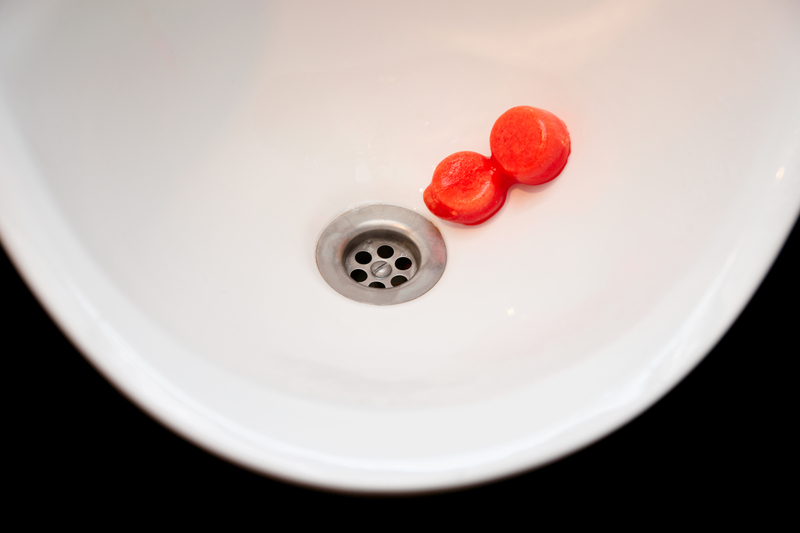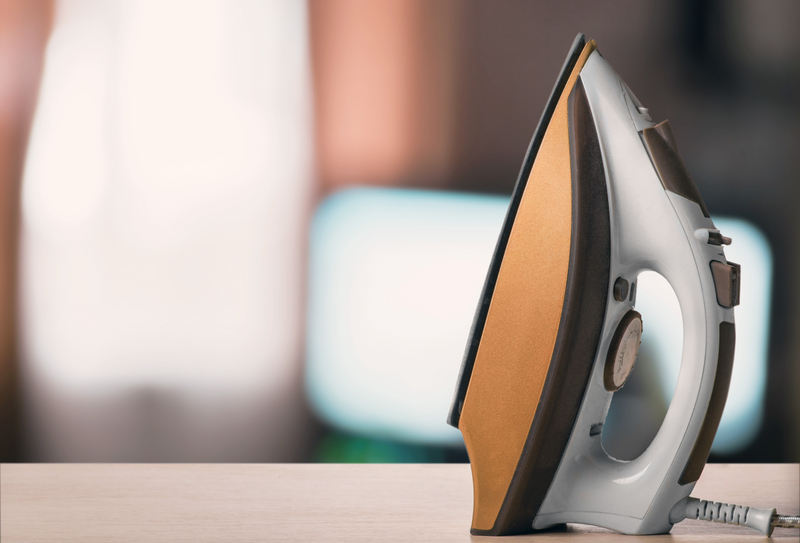Ensure a Safe Environment by Keeping Your Bathroom Mold-Free
Posted on 29/05/2025
Ensure a Safe Environment by Keeping Your Bathroom Mold-Free
Bathroom mold is a common yet often underestimated issue in many households. The combination of high humidity, warmth, and organic material in bathrooms creates an ideal environment for mold growth. But why is this so concerning? Beyond unsightly dark patches, mold in your bathroom can threaten your health and diminish the value of your home. This comprehensive guide explains how you can ensure a safe environment by keeping your bathroom mold-free through smart prevention, effective cleaning, and diligent maintenance strategies.
Why Mold-Free Bathrooms Are Essential
Mold isn't just a cosmetic problem. When left unchecked, bathroom mold spores can become airborne, triggering allergies and aggravating respiratory illnesses. For families with children, elderly members, or anyone with compromised immune systems, a mold-free bathroom is especially critical for health and safety.
- Allergic Reactions: Even low levels of mold in bathrooms can cause sneezing, coughing, and eye irritation.
- Asthma and Respiratory Issues: Mold spores worsen asthma symptoms and can make breathing difficult.
- Structural Damage: Long-term mold growth can degrade drywall, wood, and caulking, leading to expensive repairs.
- Decreased Property Value: Homes with visible mold or a history of mold problems sell for less and may scare away potential buyers.
Given these risks, preventing bathroom mold should be a top priority, not just for comfort but for long-term safety.

Understanding What Causes Bathroom Mold
To truly keep your bathroom mold-free, you need to understand what causes mold growth in the first place. Bathroom mold thrives because:
- High Humidity: Steam from showers and baths raises the moisture level significantly.
- Poor Ventilation: Without adequate airflow, moisture remains trapped, providing ideal conditions for mold spores.
- Standing Water: Water pooling on surfaces or around leaks enables mold to flourish.
- Lack of Sunlight: Mold prefers dark, damp environments, common to most bathrooms.
- Organic Materials: Paint, grout, drywall, and even soap scum provide nutrition for mold colonies.
By identifying and addressing these factors, you lay a solid foundation for a truly mold-free bathroom environment.
Effective Prevention Strategies: Stop Mold Before It Starts
1. Ensure Proper Ventilation
One of the most important methods to prevent bathroom mold is improving ventilation. After showers or baths, excessive moisture lingers in the air and on surfaces.
- Install a Bathroom Fan: Ensure you use an exhaust fan rated for your bathroom's size. Run the fan during and for at least 30 minutes after showering.
- Open Windows: If your bathroom has a window, open it to let moist air escape and encourage faster drying.
- Use a Dehumidifier: In particularly humid climates, a small dehumidifier can make a substantial difference in keeping humidity levels below 50%.
2. Minimize Standing Water
Mold thrives on damp surfaces. A simple but effective approach to bathroom mold control is to wipe down wet areas.
- Dry Showers and Sinks: After use, use a squeegee or towel to remove water from shower walls, tiles, and around the sink.
- Fix Leaks Immediately: Dripping faucets, running toilets, and leaky pipes should be repaired right away to prevent water accumulation.
3. Choose Mold-Resistant Materials
When renovating or updating your bathroom, select materials designed to discourage mold growth. These include:
- Mold-Resistant Drywall: Also called "green board," this type of drywall is less absorbent and specifically designed for wet areas.
- Anti-Microbial Paint: Opt for high-quality paints formulated to resist fungal growth on walls and ceilings.
- Non-Porous Tiles and Grout: Tiles like porcelain or ceramic and special grout sealants create surfaces less likely to harbor mold.
4. Keep Your Bathroom Well-Lit
Mold-free bathrooms tend to be well-lit. Natural sunlight helps to inhibit mold growth, but if that's not possible, use bright, energy-efficient LEDs to reduce darkness and dampness.
Recognizing Early Signs of Bathroom Mold
Even with preventive measures, it's important to detect bathroom mold early to prevent a minor issue from becoming a major headache. Look for these warning signals:
- Discoloration: Watch for black, green, or brown patches on tiles, grout, ceilings, or walls.
- Musty Odors: A persistent damp, earthy smell often indicates hidden mold behind walls or under flooring.
- Peeling Paint or Wallpaper: Moisture buildup causes finishes to bubble or peel, a sign of possible mold growth underneath.
- Frequent Allergic Reactions: Unexplained sneezing, coughing, or watery eyes in the bathroom often point to airborne mold spores.
Spotting these signs early allows you to act before the problem escalates, maintaining a safe and mold-free bathroom environment.
Effective Cleaning Techniques for Removing Bathroom Mold
If you've discovered mold, immediate action is crucial. Here's a step-by-step guide to safely and effectively remove mold from your bathroom:
1. Gather Your Supplies
- Gloves and safety goggles
- Old clothes or a disposable protective suit
- Borax, white vinegar, or hydrogen peroxide
- Spray bottle
- Scrubbing brush or old toothbrush
- Disposable rags or paper towels
2. Choose Safe Cleaning Solutions
Many store-bought cleaners can remove mold, but simple home ingredients work just as well:
- White Vinegar: Pour undiluted vinegar into a spray bottle, apply to the moldy surface, and let it sit for one hour before scrubbing.
- Borax Solution: Mix 1 cup of borax with 1 gallon of water, scrub onto the surface, and wipe off (no rinsing needed).
- Hydrogen Peroxide: Spray 3% hydrogen peroxide directly on mold, let it fizz for 10 minutes, then scrub and wipe clean.
Note: Avoid mixing cleaning agents, especially bleach and ammonia, as this can produce toxic fumes.
3. Scrub and Dry Thoroughly
- Apply your chosen solution and scrub using a brush for porous surfaces or a rag for smooth areas.
- Wipe off all residues, and repeat if necessary.
- Dry surfaces completely with a towel or by increasing ventilation.
4. Dispose of Materials Carefully
Place contaminated rags and gloves in a sealed plastic bag before throwing them away to avoid spreading spores elsewhere in your home.
Ongoing Maintenance to Keep Your Bathroom Mold-Free
1. Regular Cleaning Routines
- Wipe down shower walls and floor after every use.
- Clean tiles, grout lines, and around fixtures weekly using a mild cleaner or vinegar solution.
- Wash bath mats, towels, and shower curtains regularly; opt for machine-washable materials.
2. Inspect Hidden and Neglected Areas
Some spots regularly harbor mold due to infrequent cleaning or poor ventilation:
- Behind toilets and under sinks
- Around bathtub bases and shower doors
- Inside medicine cabinets or under flooring
3. Maintain Optimal Humidity
- Monitor your bathroom's humidity using an affordable hygrometer; keep levels between 30-50%.
- Open cupboard doors and drawers to allow air circulation.
What To Do About Persistent or Severe Mold
If you've followed all prevention and cleaning methods but bathroom mold still returns, deeper problems such as hidden leaks or faulty ventilation may be present.
- Consult a Professional: Mold remediation specialists have the tools and knowledge to safely locate and eradicate severe mold infestations.
- Check Your Home's Plumbing and Ventilation: Have an inspector assess pipes, seals, and exhaust fans to identify any underlying issues.
- Replace Affected Building Materials: Severely contaminated drywall, insulation, or wood may need professional removal and replacement.

FAQs on Keeping Bathrooms Mold-Free
How often should a bathroom be cleaned to prevent mold?
At minimum, aim for a deep clean every week and spot cleaning of wet surfaces daily. Fast, frequent cleanings keep mold from taking hold.
Can houseplants help absorb moisture and prevent bathroom mold?
Some plants, like ferns or peace lilies, can slightly lower humidity but should not replace mechanical ventilation. Too many moist plants, however, may contribute to the problem.
Is bleach a good option for removing bathroom mold?
While bleach can kill surface mold, it is less effective on porous materials and does not prevent regrowth. Consider vinegar or hydrogen peroxide for non-porous surfaces and non-toxic cleaning.
What is the ideal bathroom humidity level to avoid mold?
Keep humidity levels at or below 50% for a mold-free bathroom. Use fans, dehumidifiers, and open doors or windows for best results.
Conclusion: Create a Healthier Home by Keeping Your Bathroom Mold-Free
Ensuring a safe environment starts with proactive routines and vigilance against the ever-present threat of bathroom mold. By understanding the causes, implementing effective bathroom mold prevention strategies, and cleaning regularly, you protect your home and family's health. Make these mold-free bathroom habits part of your daily routine--for a brighter, safer, and healthier living space.
Take charge today! Start with small changes, monitor your bathroom environment, and enjoy the peace of mind that comes with a truly mold-free space.





